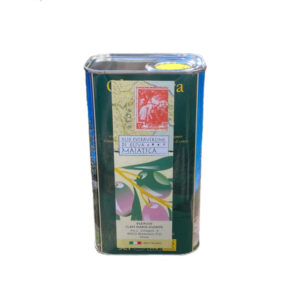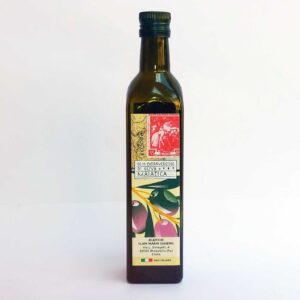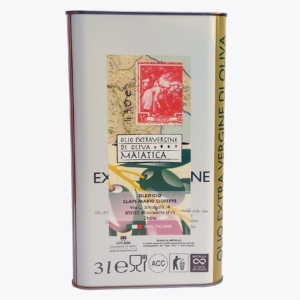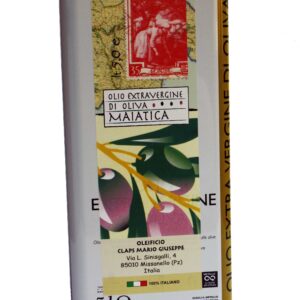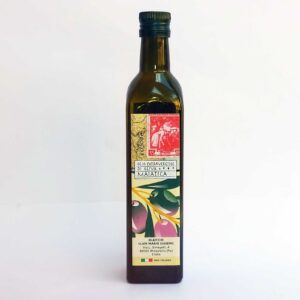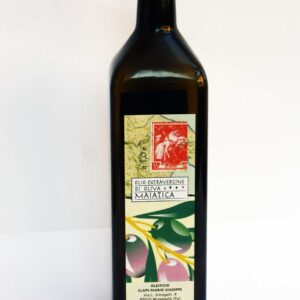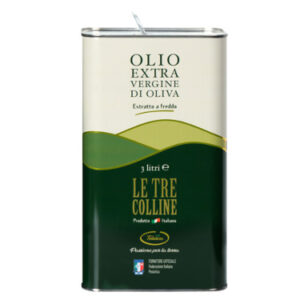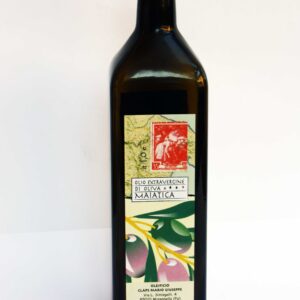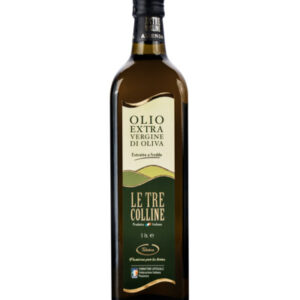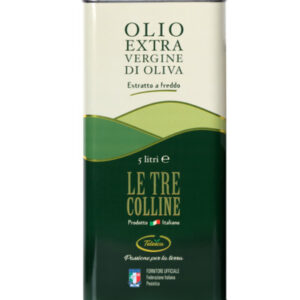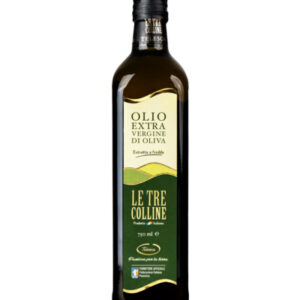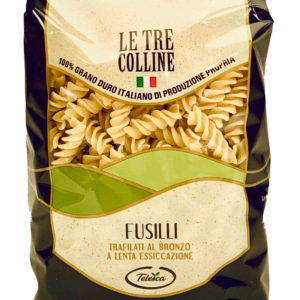Italian extra virgin olive oil
Olio extravergine d’oliva
Olive oil has always been a fundamental food of the Mediterranean Diet, from ancient Rome through the centuries to the present day. It is an integral part of Italian history and culture, recently recognized as a World Heritage Site.
Healthy food par excellence, given the high content of unsaturated fats, vitamins and antioxidants such as polyphenols and carotene.
His own history
The place of origin of the olive tree is Asia Minor, but there are traces of ancient crops throughout the Mediterranean Sea basin. Today the olive tree is also grown elsewhere, but the quantities produced in Mediterranean countries, especially in Italy, are far greater than the rest of the world.
In Italy, the olive tree has very ancient origins: pieces of wood, ripe and unripe olives, olive leaves and pits dating back to the sixth century BC. were found in the Sele plain near the temple of Paestum and in ancient Volcei, testifying to its cultivation since the time of Magna Graecia. Then spreading throughout the Italian territory it has come down to our time.
Olive oil is at the base of the food pyramid for a healthy and balanced diet.
Backbone of the Mediterranean diet, oil is always present on Italian tables: it is used to sauté ragù or as part of a marinade, as a cooking medium for fried food or simply raw on salads.
There are six categories of oil, of which the first has two sub-categories.
For simplicity, we can identify three main categories: olive oil, virgin olive oil and extra virgin olive oil.
The difference lies not only in the type of olives and in the procedure for obtaining the fruit, but also in its acidity: extra virgin olive oil must have a quantity of oleic acid that can reach a maximum of 0.8 g per 100 g.
-
Extra virgin majatica oil 1lt
Maiatica Extra Virgin Olive Oil 1lt
Maiatica Extra Virgin Olive Oil – jerry can 1lt
CLAPS extra virgin majatica olive oil 1lt of the Maiatica variety is certainly of a superior category.
Produced with collection on mechanical or electrical networks and facilitators.
In our oil mill, of course, it is transformed with the latest generation machines both in preparation and defoliation and in washing.
The extraction is carried out with a continuous mechanical cold method.14,50€ + VATExtra virgin majatica oil 1lt
14,50€ + VAT -
Extra virgin majatica oil 250ml
Maiatica Extra Virgin Olive Oil 250ml
Maiatica Extra Virgin Olive Oil – bottle 250ml
CLAPS extra virgin majatica olive oil 250ml of the Maiatica variety is certainly of a superior category.
Produced with collection on mechanical or electrical networks and facilitators.
In our oil mill, of course, it is transformed with the latest generation machines both in preparation and defoliation and in washing.
The extraction is carried out with a continuous mechanical cold method.5,00€ + VATExtra virgin majatica oil 250ml
5,00€ + VAT -
Extra virgin majatica oil 3lt
Maiatica Extra Virgin Olive Oil 3.0lt
Maiatica Extra Virgin Olive Oil – jerry can 3.0lt
CLAPS extra virgin majatica olive oil 3.0lt of the Maiatica variety is certainly of a superior category.
Produced with collection on mechanical or electrical networks and facilitators.
In our oil mill, of course, it is transformed with the latest generation machines both in preparation and defoliation and in washing.
The extraction is carried out with a continuous mechanical cold method.35,00€ + VATExtra virgin majatica oil 3lt
35,00€ + VAT -
Extra virgin majatica oil 5.0lt
Maiatica Extra Virgin Olive Oil 3.0lt
Maiatica Extra Virgin Olive Oil – jerry can 5.0lt
CLAPS extra virgin majatica olive oil 5.0lt of the Maiatica variety is certainly of a superior category.
Produced with collection on mechanical or electrical networks and facilitators.
In our oil mill, of course, it is transformed with the latest generation machines both in preparation and defoliation and in washing.
The extraction is carried out with a continuous mechanical cold method.58,00€ + VATExtra virgin majatica oil 5.0lt
58,00€ + VAT -
Extra virgin majatica oil 500ml
Maiatica Extra Virgin Olive Oil 500ml
Majatica Extra Virgin Olive Oil – bottle 500ml
CLAPS extra virgin majatica oil 500ml of the Maiatica variety is certainly of a superior category.
Produced with collection on mechanical or electrical networks and facilitators.
In our oil mill, of course, it is transformed with the latest generation machines both in preparation and defoliation and in washing.
The extraction is carried out with a continuous mechanical cold method.7,50€ + VATExtra virgin majatica oil 500ml
7,50€ + VAT -
Extra virgin majatica olive 1000ml
Maiatica Extra Virgin Olive Oil 1000ml
Maiatica Extra Virgin Olive Oil – bottle 1000ml
CLAPS extra virgin majatica olive oil 1000ml of the Maiatica variety is certainly of a superior category.
Produced with collection on mechanical or electrical networks and facilitators.
In our oil mill, of course, it is transformed with the latest generation machines both in preparation and defoliation and in washing.
The extraction is carried out with a continuous mechanical cold method.14,50€ + VATExtra virgin majatica olive 1000ml
14,50€ + VAT -
Extra virgin Olive 3lt
Extra virgin olive oil 3Lt
Extra Virgin Olive Oil 3Lt Le tre colline
The Extra Virgin Olive oil is sold in cartons of 4x3Lt cans 4x3lt = 12lt
This extra virgin olive oil is of superior category, produced according to a wise traditional technique handed down from father to son.
Obtained directly from olives solely by mechanical means: the olives used for the production of this oil are
cultivated with the traditional Italian mechanical cold method.
The Tre Colline Extra Virgin Olive Oil represents the “flower” of the oil production of our land.35,00€ + VATExtra virgin Olive 3lt
35,00€ + VAT -
Extra virgin olive Majatica 750ml
Maiatica Extra Virgin Olive Oil 750ml
Maiatica Extra Virgin Olive Oil – bottle 750ml
CLAPS extra virgin majatica olive oil 750ml of the Maiatica variety is certainly of a superior category.
Produced with collection on mechanical or electrical networks and facilitators.
In our oil mill, of course, it is transformed with the latest generation machines both in preparation and defoliation and in washing.
The extraction is carried out with a continuous mechanical cold method.11,00€ + VATExtra virgin olive Majatica 750ml
11,00€ + VAT -
Extra virgin olive oil 1000ml
Extra virgin olive oil
Extra Virgin Olive Oil 1000ml Le tre colline
The oil is sold in cartons of 6 1lt bottles 6x1lt = 6lt
This extra virgin olive oil is of superior category, produced according to a wise traditional technique handed down from father to son.
Obtained directly from olives solely by mechanical means: the olives used for the production of this oil are
cultivated with the traditional Italian mechanical cold method.
Le Tre Colline Extra Virgin Olive Oil represents the “flower” of the oil production of our land.11,60€ + VATExtra virgin olive oil 1000ml
11,60€ + VAT -
Extra virgin olive oil 5lt
Extra virgin olive oil 5Lt
Extra Virgin Olive Oil 5Lt Le tre colline
The Extra Virgin Olive oil is sold in cartons of 4x5Lt cans 4x5lt = 20lt
This extra virgin olive oil is of superior category, produced according to a wise traditional technique handed down from father to son.
Obtained directly from olives solely by mechanical means: the olives used for the production of this oil are
cultivated with the traditional Italian mechanical cold method.
The Tre Colline Extra Virgin Olive Oil represents the “flower” of the oil production of our land.58,00€ + VATExtra virgin olive oil 5lt
58,00€ + VAT -
Extra Virgin Olive Oil 750ml
Extra virgin olive oil 750ml
Extra Virgin Olive Oil 750ml Le tre colline
The Extra Virgin Olive oil is sold in cartons of 6 0.75lt bottles 6x1lt = 4.5lt
This extra virgin olive oil is of superior category, produced according to a wise traditional technique handed down from father to son.
Obtained directly from olives solely by mechanical means: the olives used for the production of this oil are
cultivated with the traditional Italian mechanical cold method.
Le Tre Colline Extra Virgin Olive Oil represents the “flower” of the oil production of our land.11,00€ + VATExtra Virgin Olive Oil 750ml
11,00€ + VAT -
FUSILLI DURUM WHEAT PASTA
FUSILLI – ITALIAN DURUM WHEAT PASTA OF OWN PRODUCTION
FUSILLI – ITALIAN DURUM WHEAT PASTA OF OWN PRODUCTION
The pasta is sold in cartons (box) of 12 packs fusilli of 500g = 6Kg
The Pasta Le Tre Colline is produced only with wheat grown under the sun of our fields in Basilicata.
For three generations we have been taking care of our wheat: from the preparation of the soil, which we let it rest cyclically, to the sowing, until the harvest.
The result of a lot of work is a durum wheat, genuine and balanced, for a healthy and digestible pasta, which brings all the flavor of our land to the table.1,08€ + VATFUSILLI DURUM WHEAT PASTA
1,08€ + VAT



